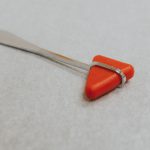Share
Celebrating one year of physician assistant regulation in Alberta: part one
Back to MessengerRead time: 3 minutes
In honour of the one-year anniversary of physician assistant (PA) regulation in Alberta, CPSA had the chance to connect with Hannah, a physician assistant at Edmonton’s University of Alberta Hospital, to learn more about her role as a PA in Alberta’s healthcare system.
How do PAs interact with and contribute to the overall healthcare team?
We act as an extension of our physician team to fill in gaps and help improve patient care. For instance, I work in a large academic centre with a team of residents, as well as attending physicians. I fill in the gaps when residents are in the operating room by covering things on the ward and helping with consults or procedures. This allows the residents to spend more time learning surgical skills. This varies depending on the exact role of the PA, though.
What are some of the possible environments in which a PA can work?
Physician assistants always collaborate with a fully-licensed physician, so a PA can work almost anywhere a physician can. Our role looks different in each situation, but essentially our scope of practice mirrors that of our supervising physician. This can include learning and performing specialty-specific procedures, taking on more in the operating room or seeing patients more autonomously, and is all negotiated between the physician and the PA. If there are tasks that one or both parties aren’t comfortable with, there’s flexibility to focus on other tasks or to pursue further training.
Since PAs can work in multiple specialities simultaneously, it’s important to understand that the PA scope of practice reflects that of their current supervising physician. For instance, if a PA is performing skin biopsies in a dermatology specialty, they can’t perform that skill in internal medicine unless skin biopsies are also a part of the latter physician’s practice.
April marks one year since PAs began formal regulation in Alberta. How is your role different now than it was before?
Prior to regulation, PAs could practise in Alberta and could voluntarily register with CPSA as non-regulated members. Since regulation, many of our skills and capabilities have been clarified through documents such as the Health Professions Act (HPA), allowing for increased efficiency and autonomy within the PA-physician relationship. For example, all orders given by a PA working in a hospital setting prior to regulation—ordering medication, labs or asking for vital signs at a particular interval—needed to be co-signed by the attending physician. Now, within an established PA-physician relationship, PAs can put in their own orders, which ultimately makes things more efficient.
Regulation increases efficiency for both the attending physician and Albertans receiving care. What are some of the other benefits of PA regulation?
Being regulated members has broadened our scope and made things more efficient, but it’s also given PAs a place to land. As a profession, we now have support from CPSA, whether that’s getting information about our profession out to physicians and the public or providing support in terms of how we should be practising. I think it’s also a point of comfort for a lot of Albertans, knowing that physician assistants are regulated by a prestigious college. I think Albertans can trust PAs knowing that we must abide by the same standards of practice as physicians.
Since PAs are newer to regulation in Alberta, have you encountered any misconceptions about your role?
There are definitely some misconceptions about what we do and having the word ”assistant” in your title can make things a little bit confusing. There’s often the misconception that physician assistants are more like medical assistants or secretaries as opposed to being clinical practitioners. Fortunately, this is often easily clarified once we can demonstrate our skills and show Albertans how we can help.
Do you think being a regulated member has made a difference in terms of clarity around your role?
In terms of clarity surrounding our role, regulation has definitely made a difference. If you Google search “physician assistant Alberta” or “what is a physician assistant in Alberta,” you’ll see a very official statement on what we are, how we work and which bodies govern us. Even just giving patients a place to turn when they’re looking for information is helpful because there can be misinformation or even misattribution of titles.
Through regulation we also have title protection. To be a physician assistant in Alberta, you must meet certain educational and certification requirements, as well as have a practice permit. This helps us further differentiate from other titles that may sound similar but have a very different scope.
Where can physicians go if they’re looking for more information or want to contact a PA?
Physicians who are interested in connecting with PAs can reach out through our national association, the Canadian Association of Physician Assistants (CAPA), the CAPA Alberta representative or any PAs they meet (we’re quite well connected and most of us are happy to help).
Read part two of our conversation with Hannah in May’s edition of The Messenger.




















Comments for this post are now closed. If you would like to share your feedback on this topic, please email support@cpsa.ca.